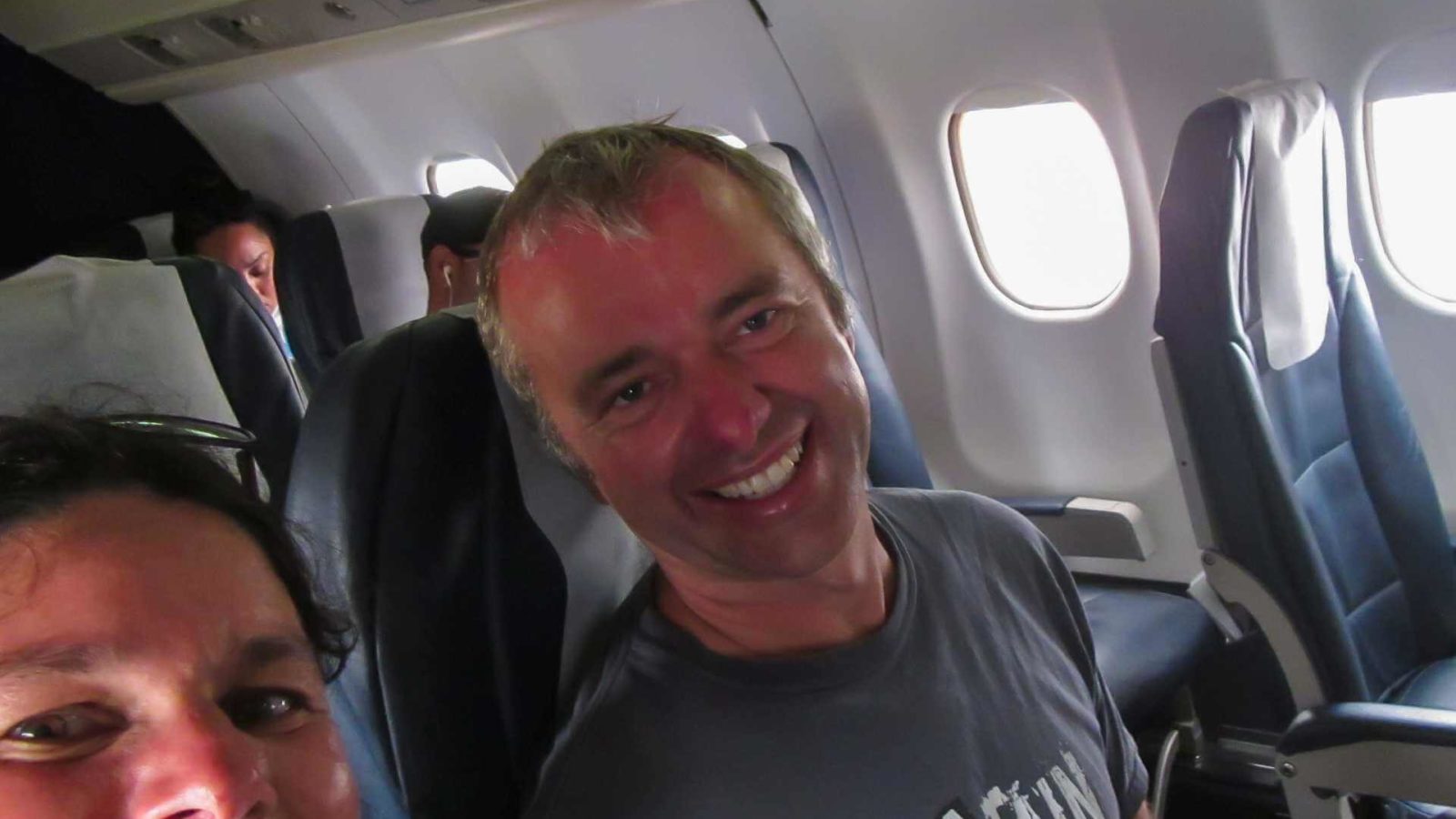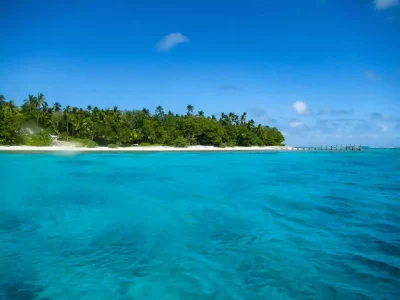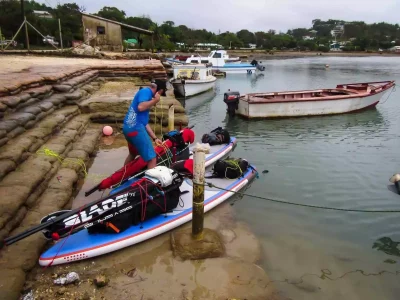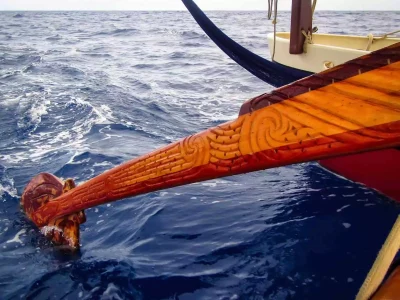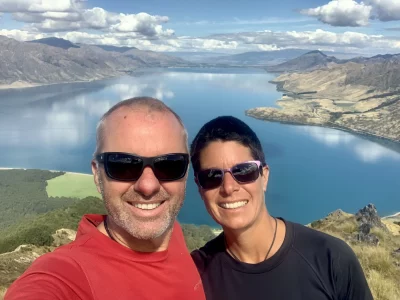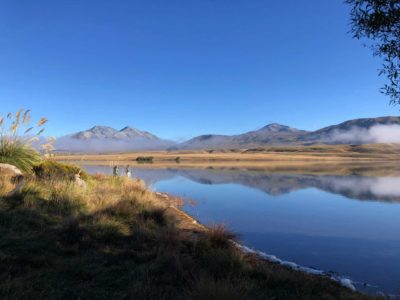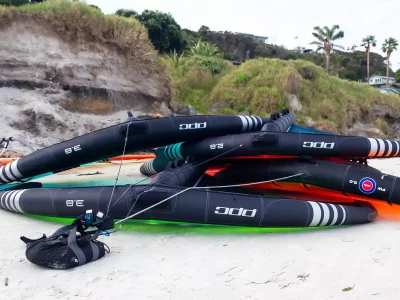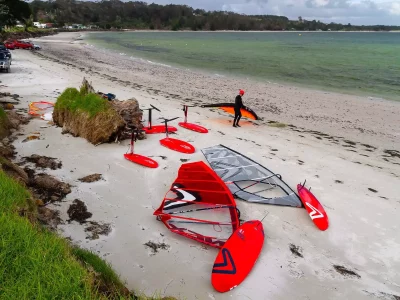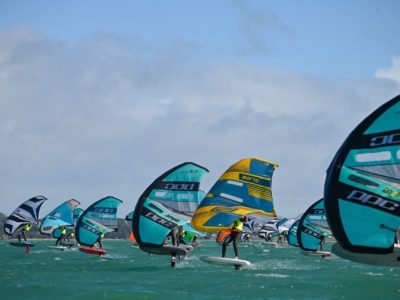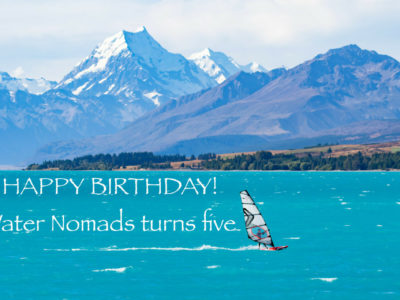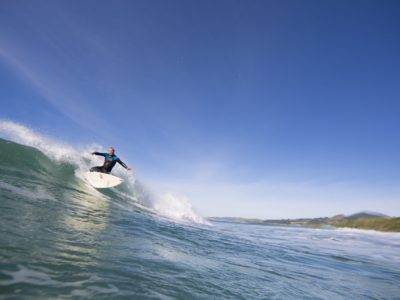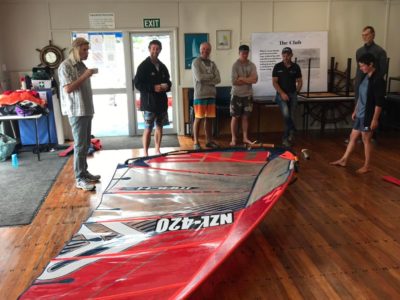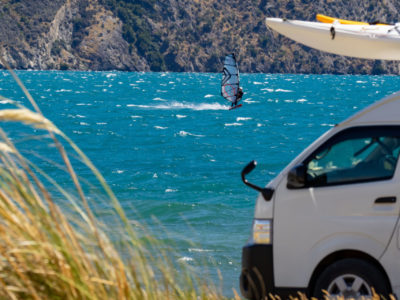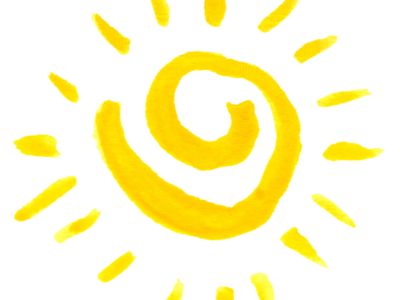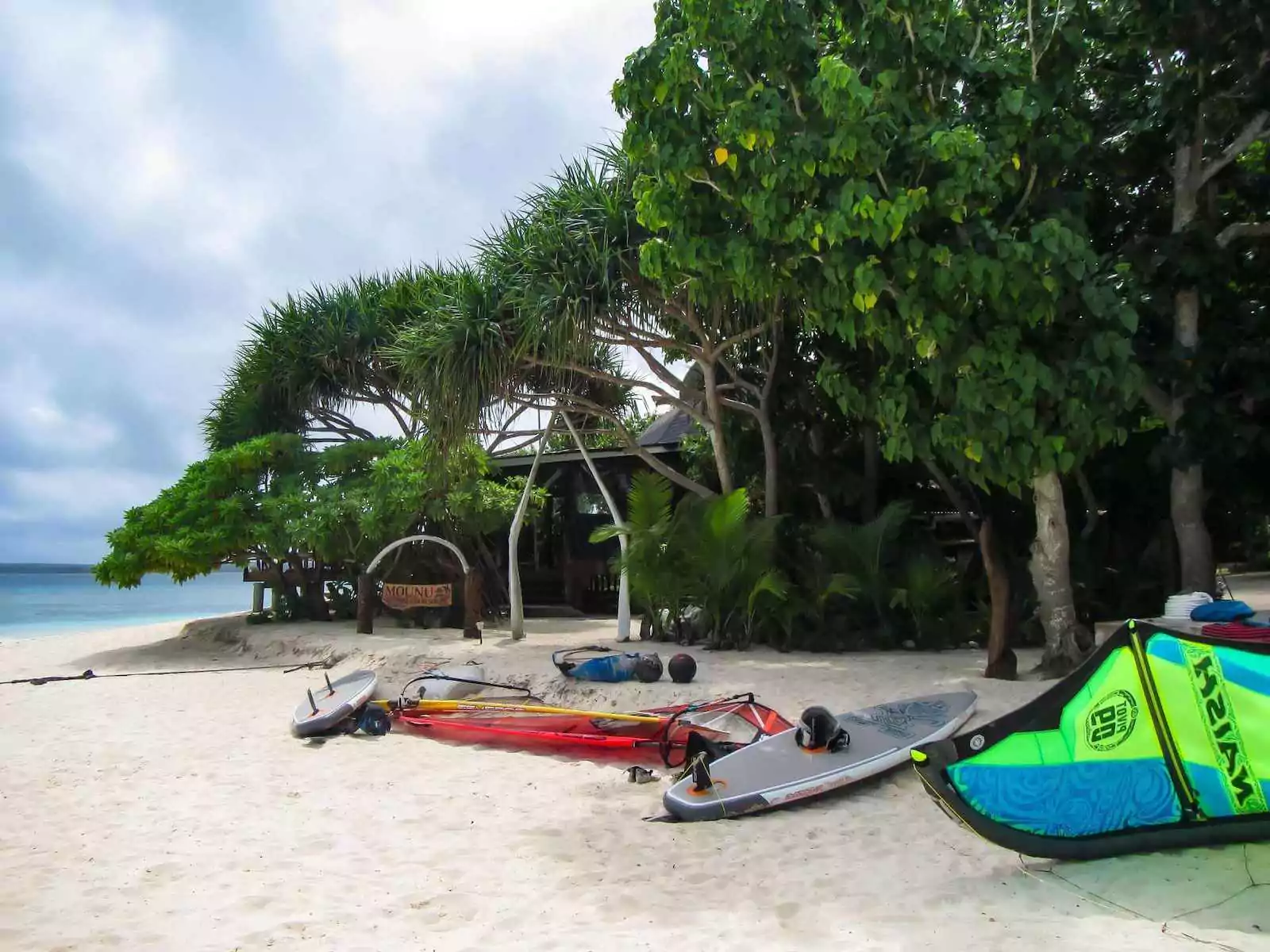
ISLAND HOPPING IN THE SOUTH PACIFIC
Water Nomads in Tonga Part 4
Alas, our time in Tonga was soon coming to an end, and before we had to catch our flights back home, we wanted to drop in at our friend Kirsty’s place, Mounu Island.
We had a fantastic few days with Brett and his dogs Diesel and Willow on Euakafa. The distance from Euakafa to Mounu Island is about 5km, and we weren’t entirely sure, which island we were actually aiming for. We hadn’t been there before, so we didn’t know what it was supposed to look like. Doesn’t matter, we will figure it out as we get closer!
Both of us launched from the beach, as usual in slightly different directions. Bevan, being the Kiwi, wasn’t bothered at all about staying in line of sight with each other, and me, I was convinced I knew where we were going. I eventually found myself at a rocky shoreline, that didn’t really look like a resort island. It looked rather empty. I soon figured I was way too far north and had to get further south to Mounu. However, I couldn’t see Bevan at all anymore. I knew he disappeared somewhere south but there was no red sail on the horizon, and definitely not anywhere close to our destination. Now the German came out of me, and I started to worry about him. After all, he wasn’t that experienced of a windsurfer!
I cruised around for a while, trying to spot him, fearing for the worst. Did his board explode and sink, due to the strain on the mast base, leaving him swimming with a few drybags around him? None of the whale watching boats I asked had seen him neither. Dropping my bags on (the real) Mounu Island I went off on a rescue mission – just as he came around the corner!
What happened? I had sailed off too far north, Bevan went too far south and found himself navigating through a reef to a sandy island. He lost his bags off the board (those stick on attachment points weren’t designed for this job neither) and had to re-tie everything, more or less elegant. That’s why I couldn’t see his sail, because it was in the water at that time! He had also worked out his navigational error and set off back through the hazardous reef with a now decidedly unstable load toward Mounu Island.
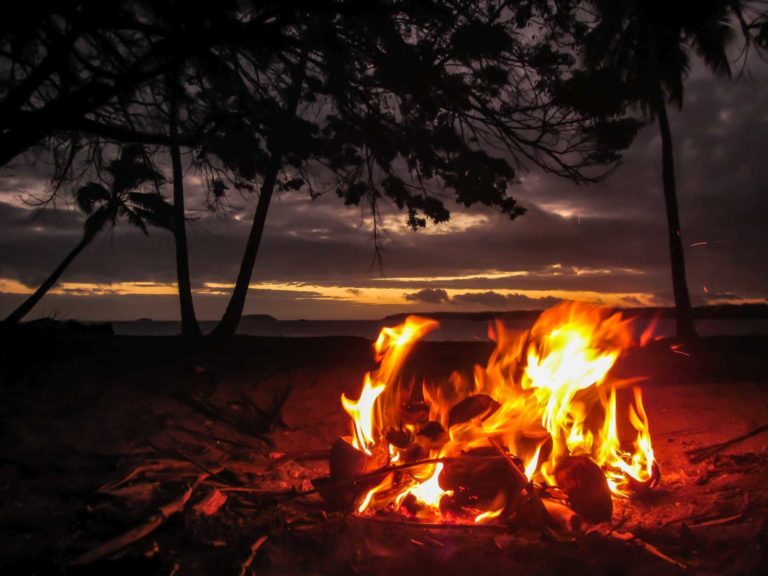

For the night we crossed over to nearby Ovalau Island where we set up camp. We joined Kirsty for lunch the next day, just as her guests of a week departed back home. What a luxury, a cold drink and a delicious meal! All from the comfort of the restaurant deck, overlooking the bay. Mounu Island is truly stunning. Apart from the central building with kitchen, restaurant and community area, there are only 5 comfortable fales spread out around this small, nearly round island, each of them right at the water’s edge. Secluded pathways meander through the beautiful bush, connecting them to the main house. Otto, the dog and the cats all have very big characters and are an important part of the Mounu family. There is sometimes even a tame fruitbat – Foxy!
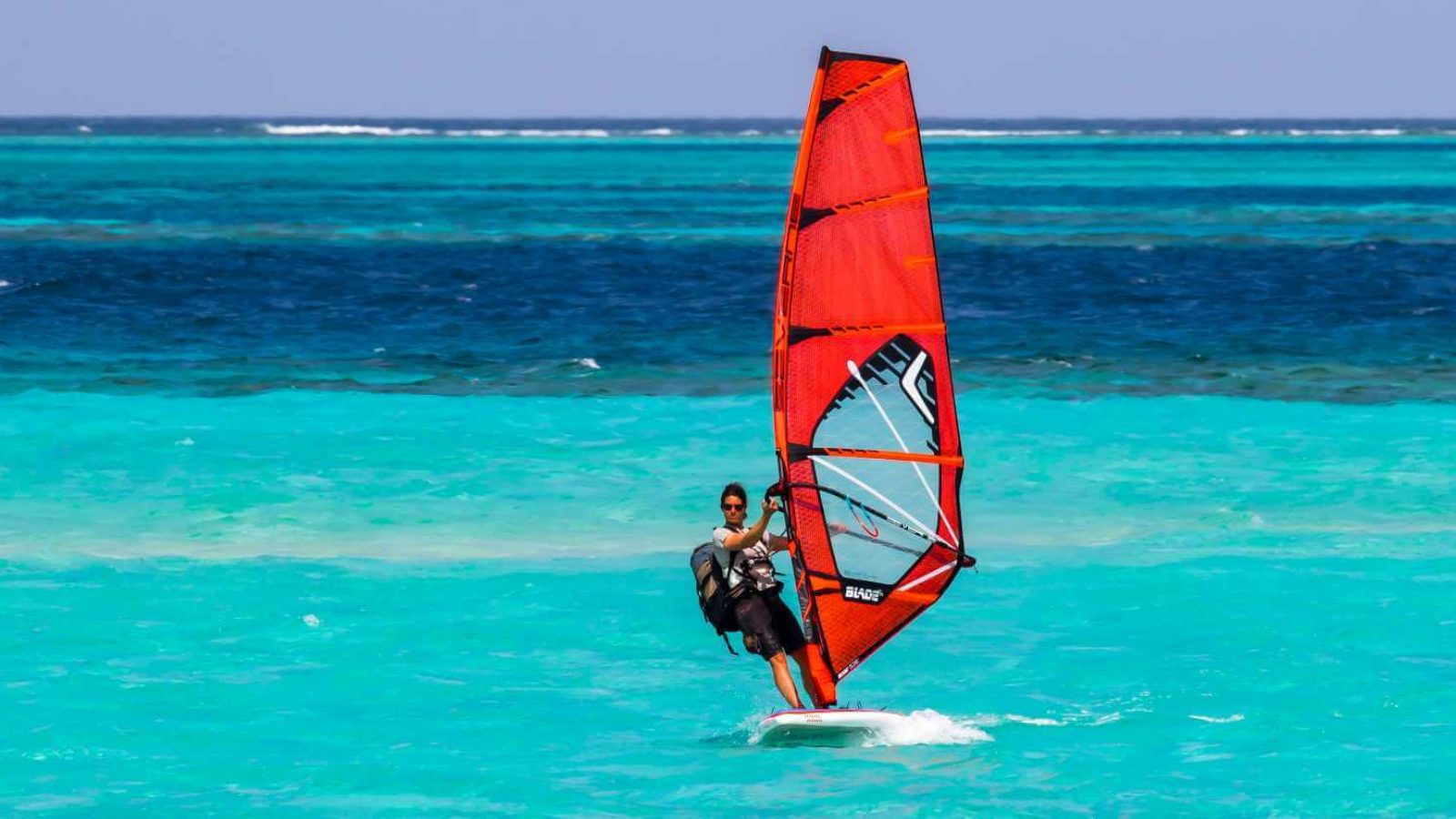
With only a few days left before we had to catch our flights home, we really needed to make a move towards Neiafu now. We had a big day ahead of windsurfing past Sisia Island all the way to Nuku Island and then further on to Port Maurelle.
Nuku is also known as Picnic Island, as many beach functions for visiting dignitaries are held here – the perfect spot for our lunch break!
After lunch, we changed from sailing to paddling. Coming into the lee of Kapa Island, there wouldn’t be much wind for us. The plan was to get as far as possible on that day, because the next day would be a long paddle all the way into Neiafu. Being last possible campspot before the coastline turned to sheer cliffs was Port Maurelle, a popular spot for cruising yachts, this is where we pitched our tent.
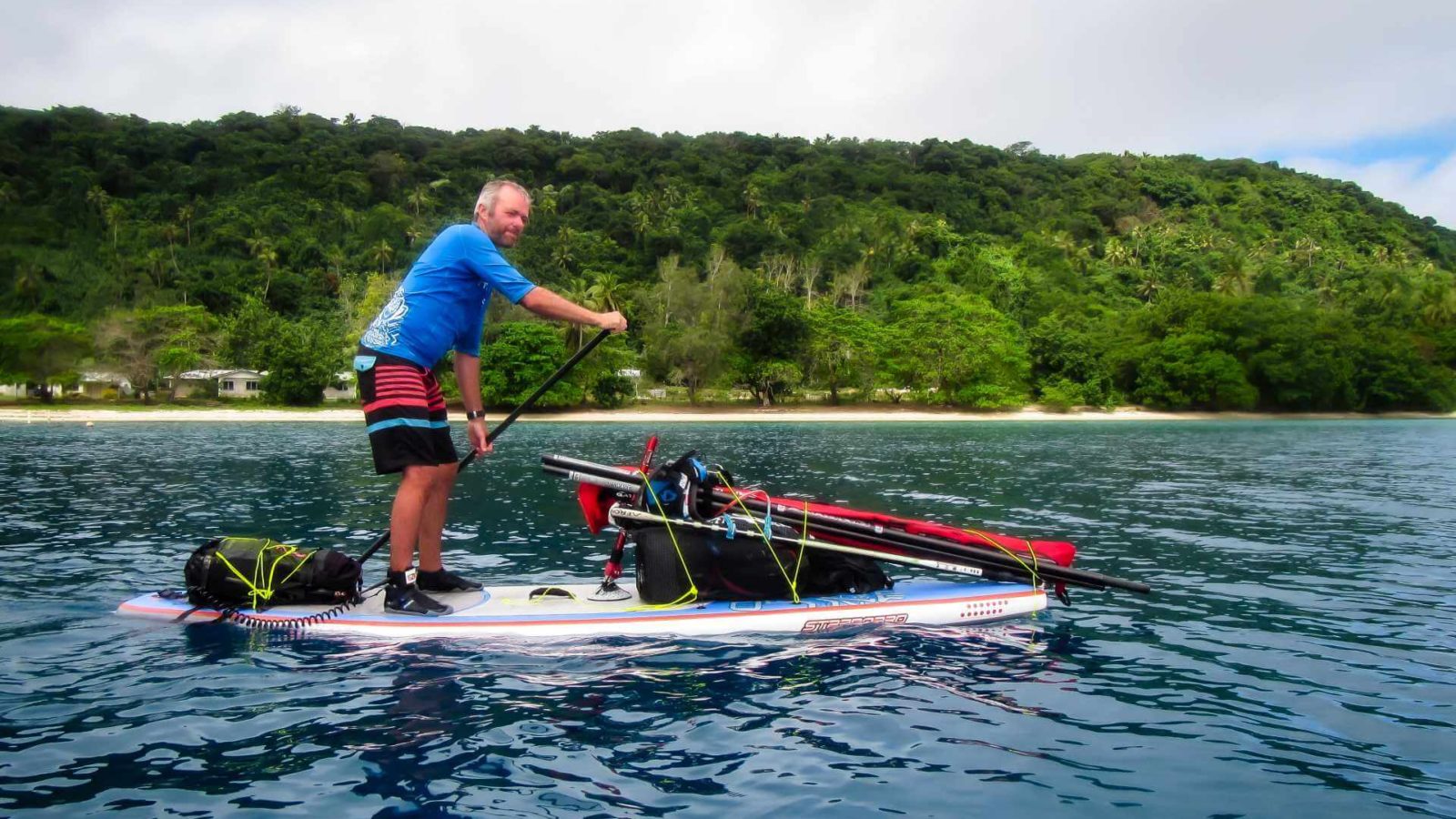
Joining a group of yachties who were anchored in the bay for a potluck dinner and bonfire was a highlight. Some more great stories to listen to! During that night, we listened for the last time to the rats chewing coconuts outside our tent.
Our last day on the water
This was going to be a long day paddling, as we didn’t expect any wind (or at least none from the right direction) to get into Neiafu.
Soon after we set off, the beach turned into vertical cliffs 50-100m high, which were dropping off as steep under water. It was like paddling in an aquarium. The water had that dark blue colour and was super clear, and you could see plenty of fish minding their own business underneath you. There wasn’t a breath of wind. We paddled along and into Swallows Cave, exploring as we went.
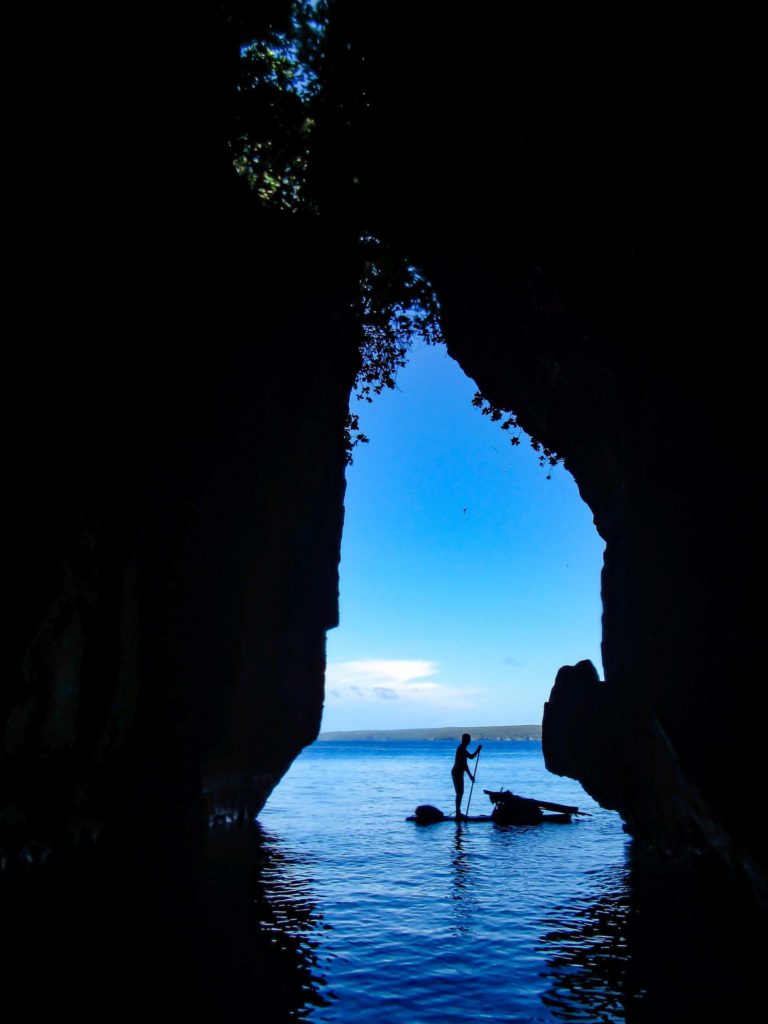
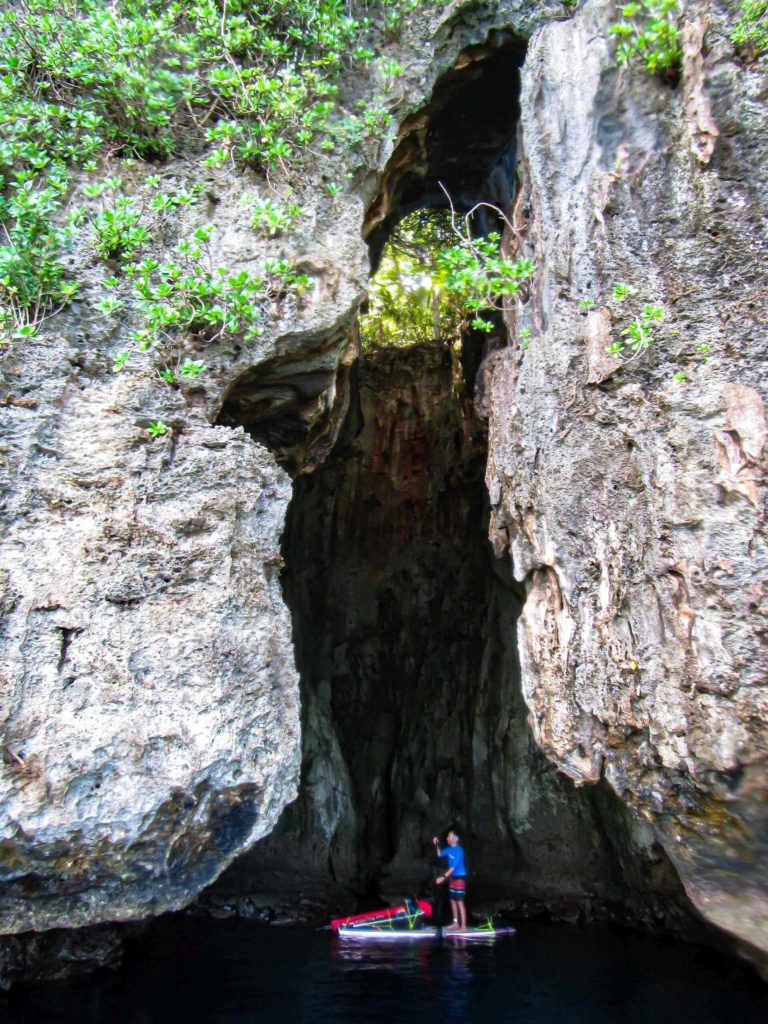
Then we round the northern tip of Kapa island for the long stretch along the channel to Neiafu. The steep cliffs disappear. We keep on hugging the coast to not be too affected by the outgoing tide and potential upcoming headwinds. Shortly before Neiafu we spot Okeanos (Remember? Our ride from Tongatapu to Vava’u!) and give them a wave. It took them a few moments to realise who we are and that those 2 mad palangi are really still floating on their boards!
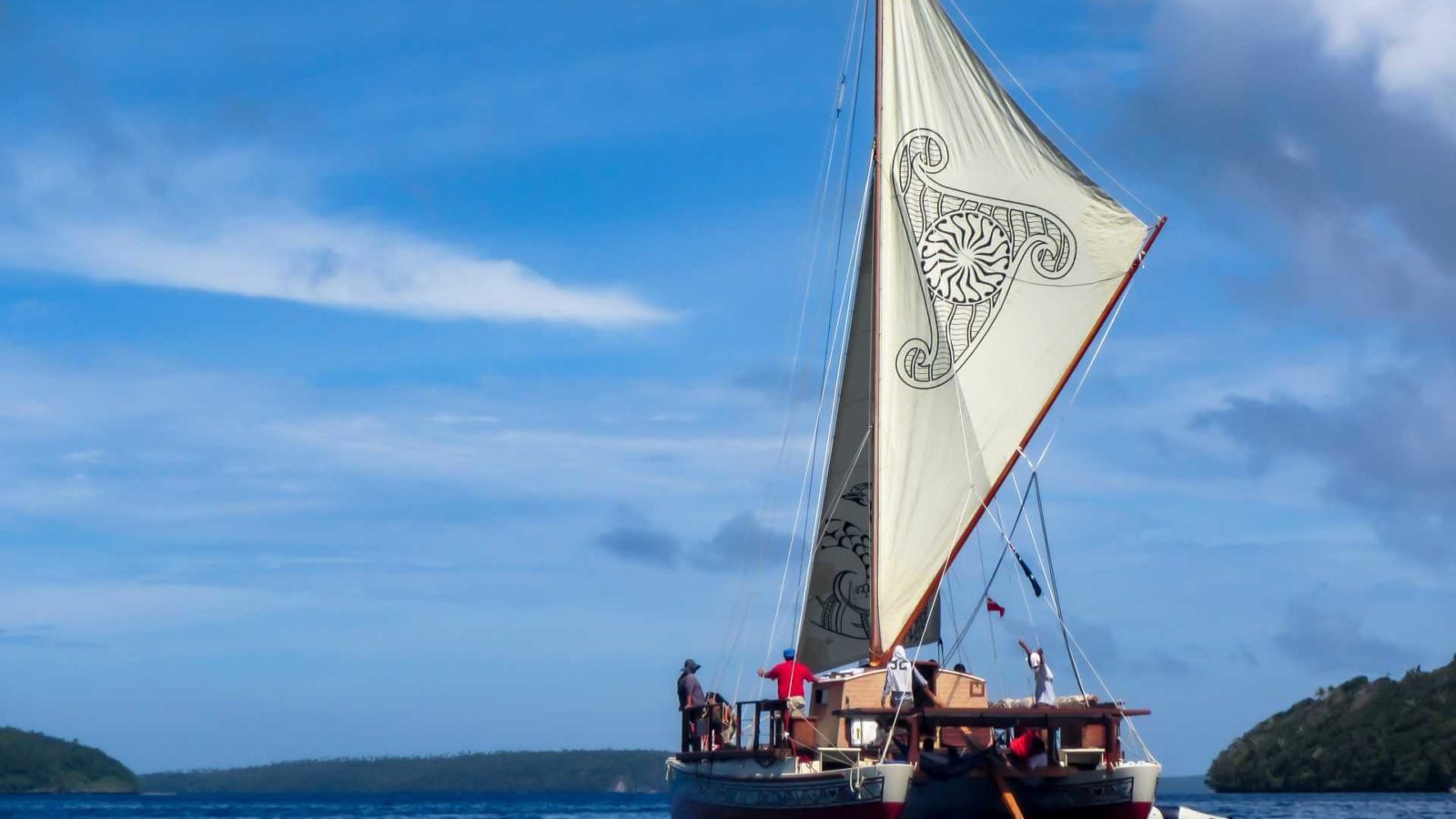
We have a last lunchbreak on Lotuma, an ex military island just before the port of Neiafu. Conveniently we can land on the wharf and don’t need to unload the boards. The view from the watchtower is stunning (though I don’t think we were really supposed to be there)! We can even see Silverlynx leaving the port and try to call them on our VHF to wish them a safe journey, but they are not listening in.
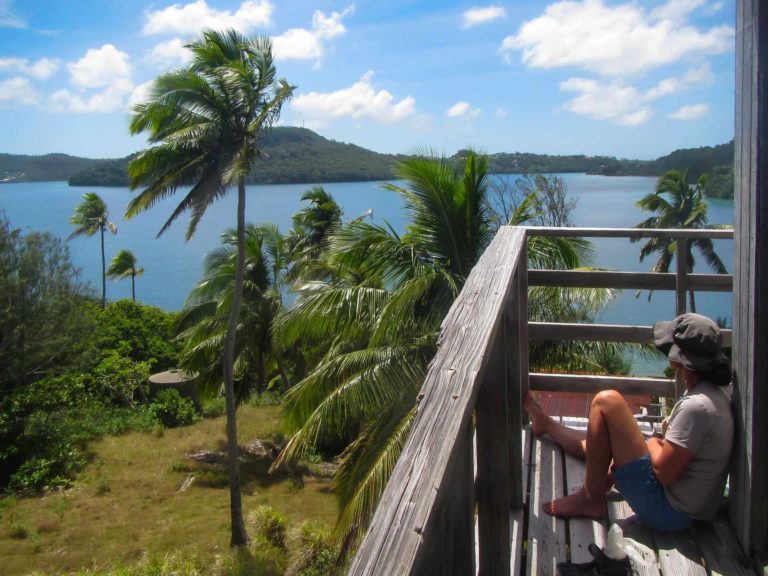
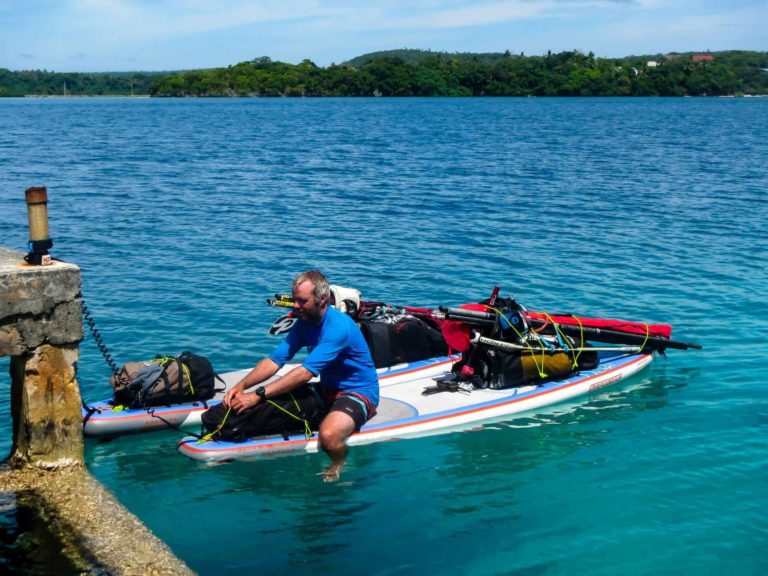
Our last night was spent in a hostel, cleaning, drying and sorting our gear. We left our boards at a local business for Kirsty to pick up. She generously had offered to store them for us until we would manage to sell them (we tried to sell them through the local noticeboard but so far were unlucky).
The next day we took the flight to Tongatapu and then back to Auckland. With waiting times between flights it seemed to take forever. By the time we reached New Zealand we were exhausted and Vava’u felt like a long time ago.
What would we do different?
Not a great deal. In fact 12 months later (2017) we returned to do it again! This time going west to discover the rest of the island group – but thats another story. Here are some thoughts:
- Improve dry bags (pvc roll up top) – surprisingly dry bags don’t stay particularly dry when constantly submerged in sea water. The ones we usually use for our kayaks did not work that great here.
- Stick on attachments for lashing the bags on the deck do not stay stuck. We should have plastic welded these on. But in the end, wrapping the lashing rope right around the board worked, although did imped performance somewhat.
- A better map than the tourist brochure! But ultimately that was half the fun…
- Cotton is hopeless, everything gets salty and never dries.
- Rats don’t just eat coconuts, hanging our food bag from a tree helps (one badly eaten backpack required much Duct Tape to make it a bag again!).
- Maybe a larger size inflatable board, the 11’6″ touring was half submerged when fully loaded. Though with the added size/weight to transport, and manoeuvrability on the water – everything is a compromise…
- Our machete and learning to get into coconuts with it.
- Using the paddle board travel bag to hold together the dry bags was way better than backpacks, and much easier to load and strap down.
- Having a VHF handheld radio, enabled us to contact islands and yachts which was useful for weather updates. (we also carried a PLB).
- Taking more cord for lashing than was necessary (and a roll of Duct Tape).
We hope you enjoyed this story as much as we enjoyed doing it. Hope to see you on the water sometime soon! Cheers Bevan and Heidi.
Looking to travel New Zealand? Check out Water Nomads for Watersports Rental and Surfari Trips!
